Jeff Bezos, “Mr. Amazon,” ranked among the world’s richest men according to Forbes magazine on May 4, 2025, will marry American journalist Lauren Sanchez in Venice between June 24 and 26. The arrival of the American couple, accompanied by over two hundred celebrity guests (including, it is rumored, US President Donald Trump), has sparked controversy and reignited the debate on Venice as a hub of luxury and Italian excellence, but also on all the critical issues facing the lagoon city due to mass tourism.
The venue for the ceremony has not yet been officially announced, but various rumors suggest that the island of San Giorgio Maggiore will be the setting for the event. Situated directly across from St. Mark's Square, it is one of the most evocative places in Venice, rich in modern and contemporary art and architecture, and its strategic location offers one of the most spectacular views of the city and the lagoon.
From the Middle Ages to the Renaissance
San Giorgio Maggiore is itself living architecture, in constant transformation. It is a compendium of eras, languages, and materials, spanning from the Middle Ages to the present day.
After the foundation of a small church dedicated to St. George between the 8th and 9th centuries, a Benedictine monastery was built around the year 1000, which became increasingly important over the centuries, so much so that it welcomed Cosimo de' Medici the Elder in exile from Florence in 1433. A little over a century later, one of the greatest representatives of Italian Renaissance architecture, Andrea Palladio, was called upon to build the monastery's refectory and then the imposing basilica that still dominates the lagoon with its luminous façade. Inside the basilica, whose design was inspired by the great ancient Roman thermal buildings, giving it a remarkable monumentality, you can still admire several paintings of great value, such as The Last Supper (1592-1594) and The Gathering of the Manna (1592-1594) by Tintoretto.
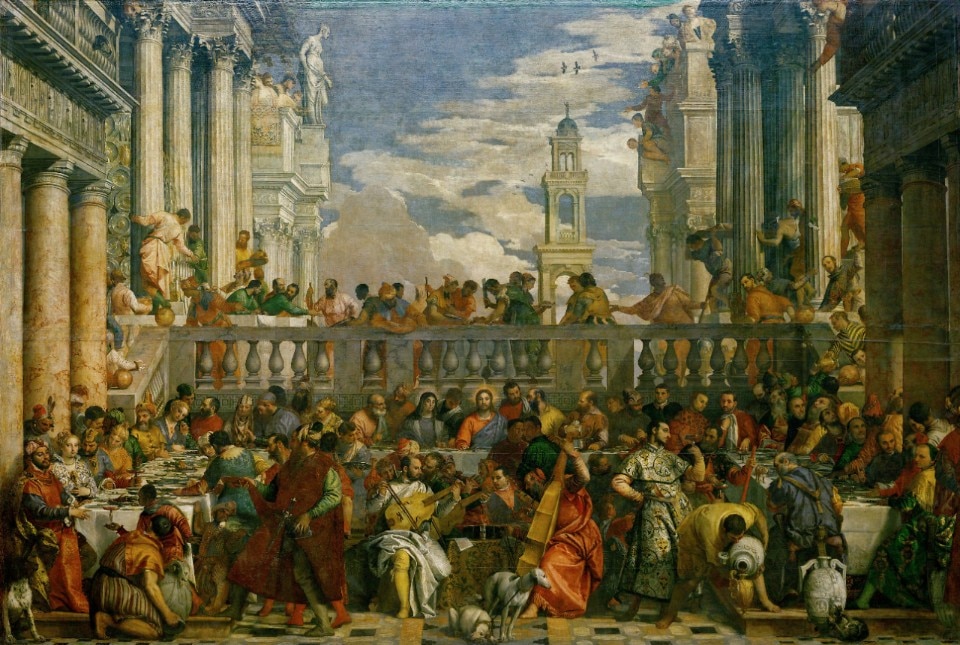
The renaissance of the island of San Giorgio thanks to the Giorgio Cini Foundation
After Napoleon's plundering—during which Veronese's precious painting The Wedding at Cana (1563) was stolen and taken to the Louvre, where it still hangs today—the monastic complex was suppressed and the island of San Giorgio became a military garrison. It was not until 1951 that it began to shine again, when Vittorio Cini, an Italian politician and entrepreneur, established the Giorgio Cini Foundation in the name of his son, who died prematurely in a plane crash, with the aim of saving the island from the decay of over 150 years of military occupation by restoring the monumental complex of the island of San Giorgio Maggiore to make it fertile ground for the formation of educational, social, cultural, and artistic institutions.
Today, the Foundation continues to promote cultural and scientific activities such as exhibitions, seminars, and advanced training courses, and houses seven institutes and three research centers specializing in fields ranging from theater to music, spirituality to digital technologies for the enhancement of cultural heritage.
The island of San Giorgio Maggiore from 2000 to today
Over the decades, the Cini Foundation has carried out temporary projects, architectural interventions, and collaborations that have made the island a must-see destination for all art and architecture enthusiasts.
In 2009, the foundation's library was inaugurated in the ancient 15th-century dormitory: the Manica Lunga was transformed into a contemporary library designed by Michele De Lucchi. The long hall, with its striking perspective, houses over 100,000 volumes on two levels of shelving, while preserving historical elements such as the small doors of the cells. The space, which is simple and functional, offers consultation stations and areas for meetings and multimedia activities.
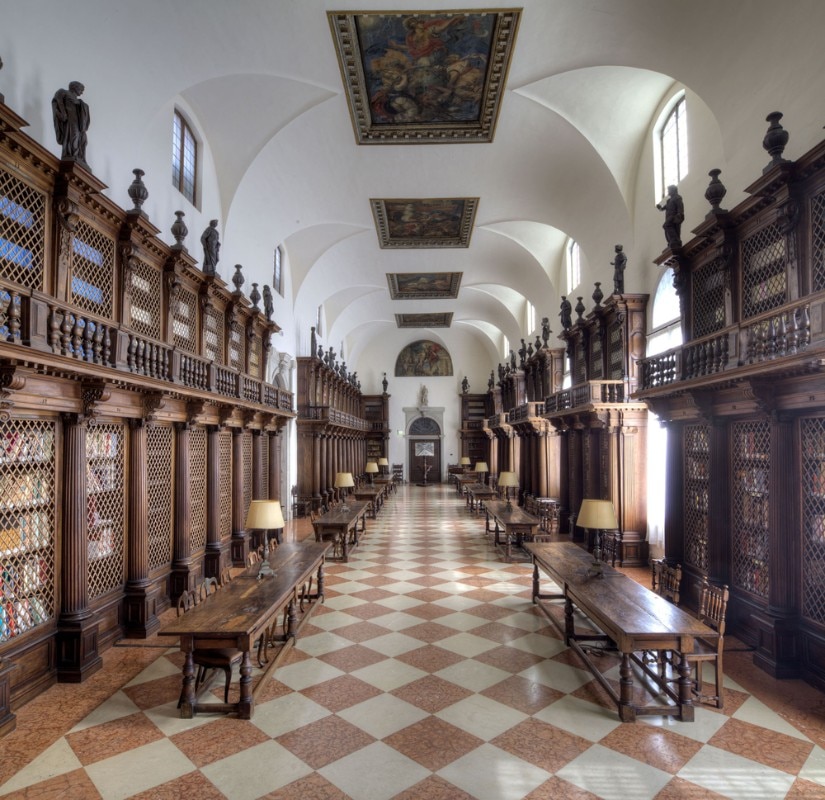
Since its beginnings, the Foundation has established a series of buildings dedicated to professional training: the Maritime Center (1952) and the Arts and Crafts Center (1953), which were active until the 1970s, offering courses in typography, carpentry, tailoring, and mechanics for young Venetians. When that experience came to an end, the spaces were repurposed: since 2012, the former has been home to Le Stanze del Vetro, a cultural project dedicated to glass as an artistic medium. Every year, it hosts monographic and collective exhibitions by international artists who have used this material in their creative research. The project, supported by the Pentagram Stiftung, also includes a Study Center, a specialized library, and scholarships to promote knowledge of the history and techniques of Venetian glass. The space, redeveloped by the New York-based Selldorf studio, also hosts events, conferences, and educational activities.
The second space, in 2023, gave rise to the Le Stanze della Fotografia project, which was launched as an international center for the promotion and study of photography and visual culture. Alongside temporary exhibitions, the center, directed by Denis Curti, offers workshops, masterclasses, meetings, and seminars with internationally renowned photographers, expanding on the legacy of the Casa dei Tre Oci. The project aims to create collaborations with prestigious photographic institutions such as Magnum Photos and Jeu de Paume. A dedicated foundation supports the activities thanks to strategic partners, including the Fondazione di Venezia, which also promotes an annual award for young photographers under 30.
In 2018, on the occasion of the Holy See's debut at the 16th International Architecture Biennale, the large forest on the island of San Giorgio welcomed curator Francesco Dal Co's project entitled Vatican Chapels: ten chapels immersed in greenery designed by ten architects (Norman Foster, Francesco Cellini, Eduardo Souto de Moura, Terunobu Fujimori, Andrew D. Berman, Javier Corvalán Espínola, Flores & Prats, Sean Godsell, Carla Juacaba, MAP Studio, and Smiljan Radic Clarke). The ten chapels can still be visited today on a guided tour of the island, which counts other incredible stops. These include the Borges Labyrinth, inaugurated in 2011 on the 25th anniversary of the death of Jorge Luis Borges, which is a tribute to the Argentine writer: a kilometer-long network of paths formed by 3,200 boxwood plants, arranged according to the design of architect Randoll Coate.
Then there is the Teatro Verde, commissioned by Vittorio Cini and inaugurated in 1954: an open-air amphitheater designed by architects Luigi Vietti and Angelo Scattolin, with a capacity of 1,500 seats, which, after major restoration work in 2021, reopened to the public on April 10, 2022. The project has enhanced the original architecture, materials, botanical context, and evocative landscape views. Promoted and curated by the Giorgio Cini Foundation, the restoration was made possible thanks to the support of Cartier.
The last stop is the island's nineteenth-century squero, once a shipyard for boat maintenance, which was transformed in 2016 into a modern and spectacular auditorium, designed by Cattaruzza Millosevich Architetti Associati.


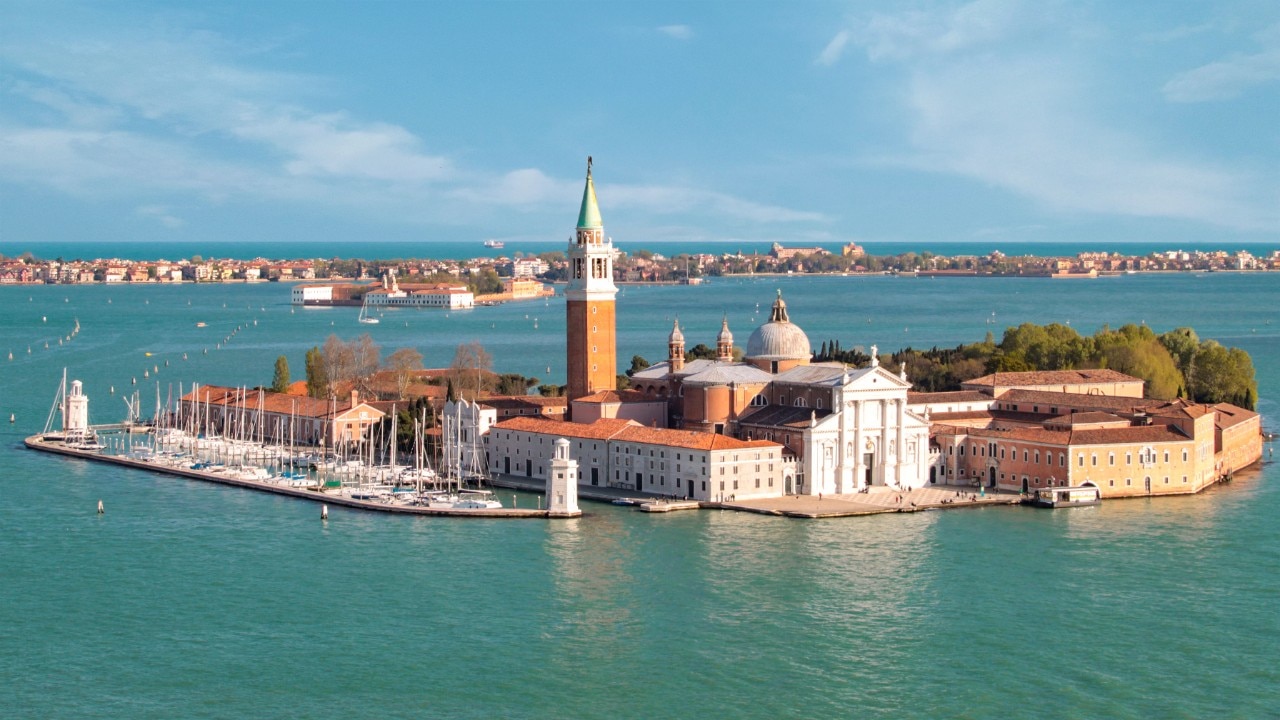

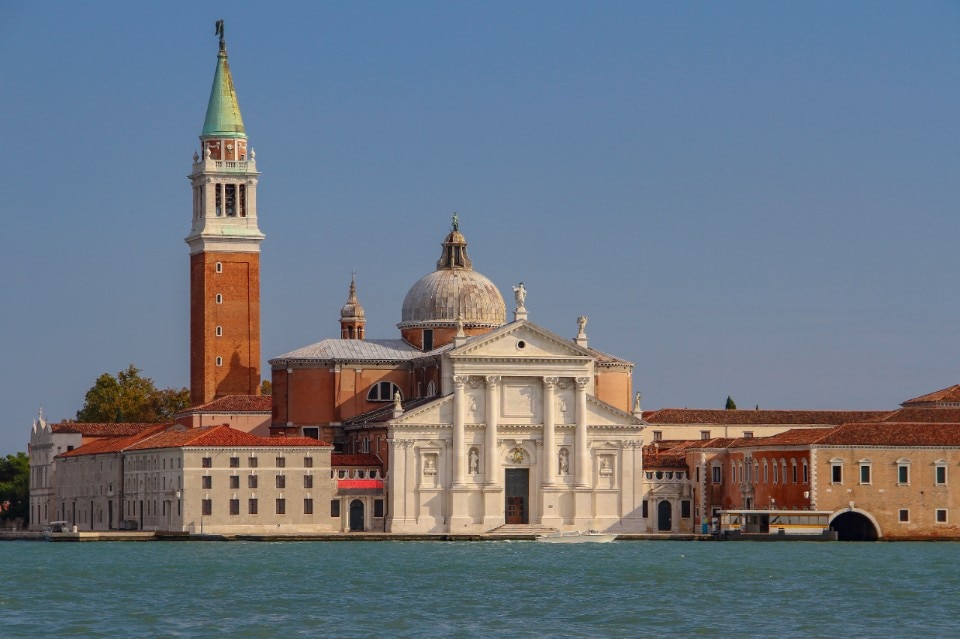
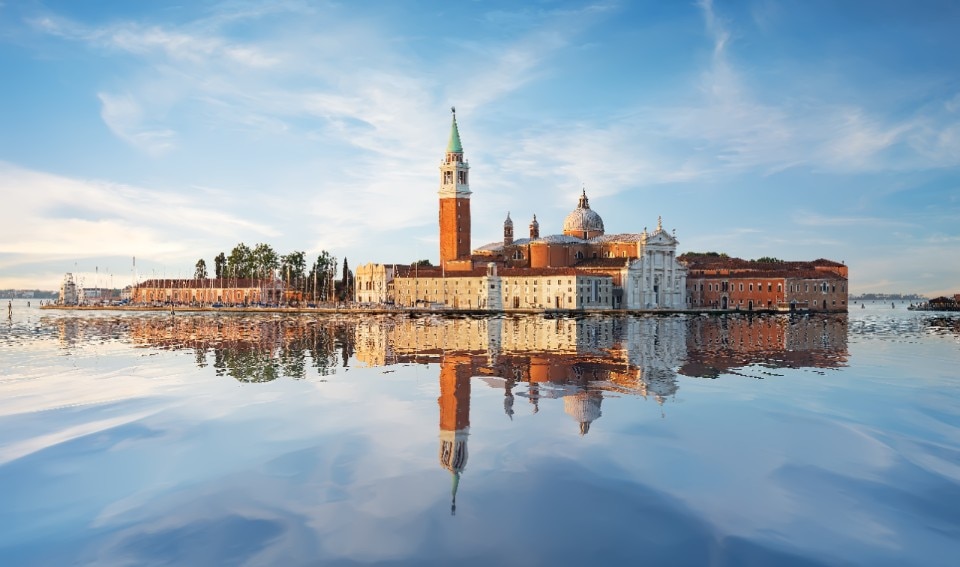
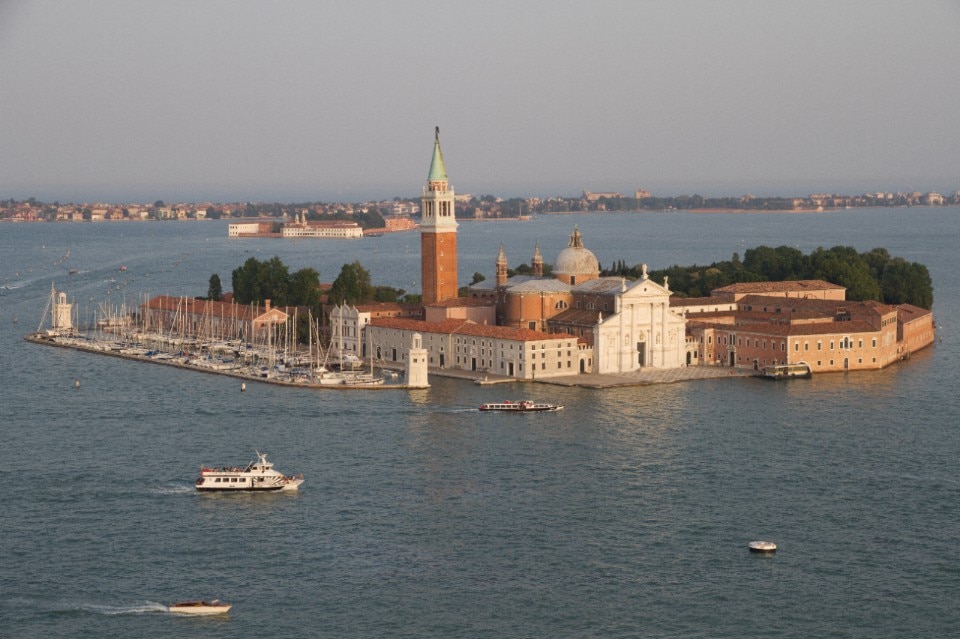
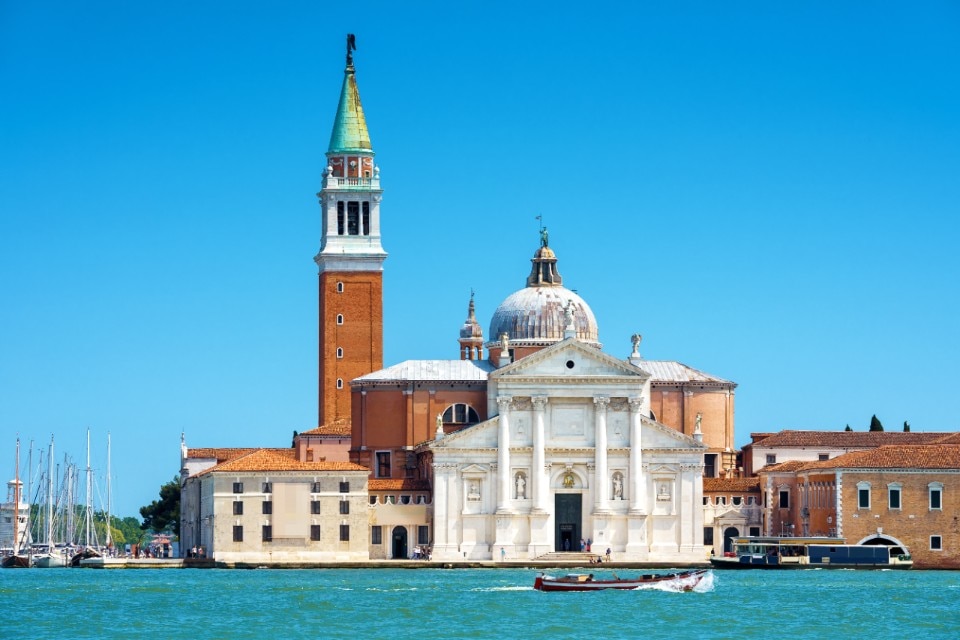
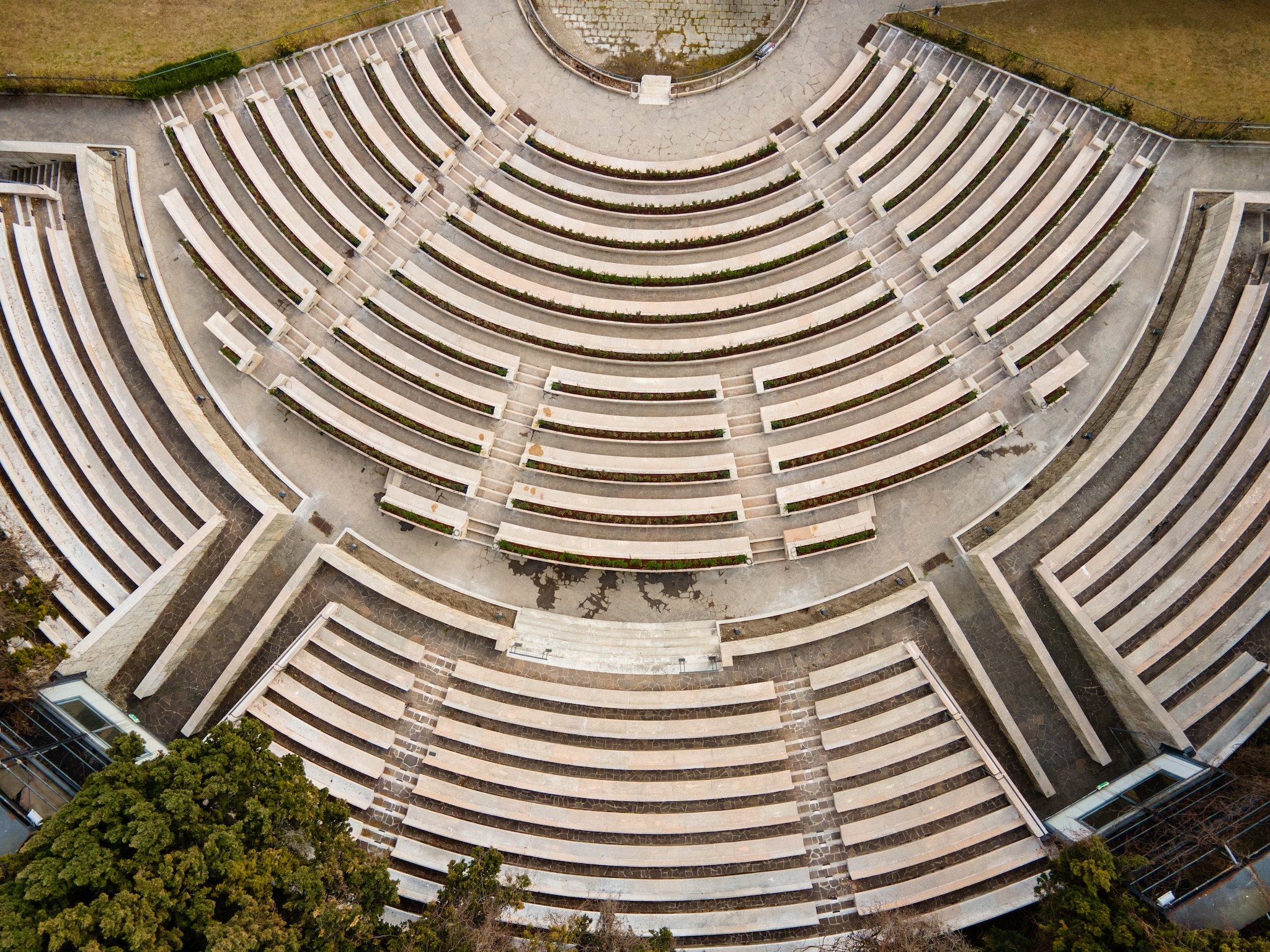
.jpg.foto.rmedium.png)
.jpg.foto.rmedium.png)
.jpg.foto.rmedium.png)
.jpg.foto.rmedium.png)
.jpg.foto.rmedium.png)
.jpg.foto.rmedium.png)
.jpg.foto.rmedium.png)
.jpg.foto.rmedium.png)
.jpg.foto.rmedium.png)
.jpg.foto.rmedium.png)
.jpg.foto.rmedium.png)
.jpg.foto.rmedium.png)